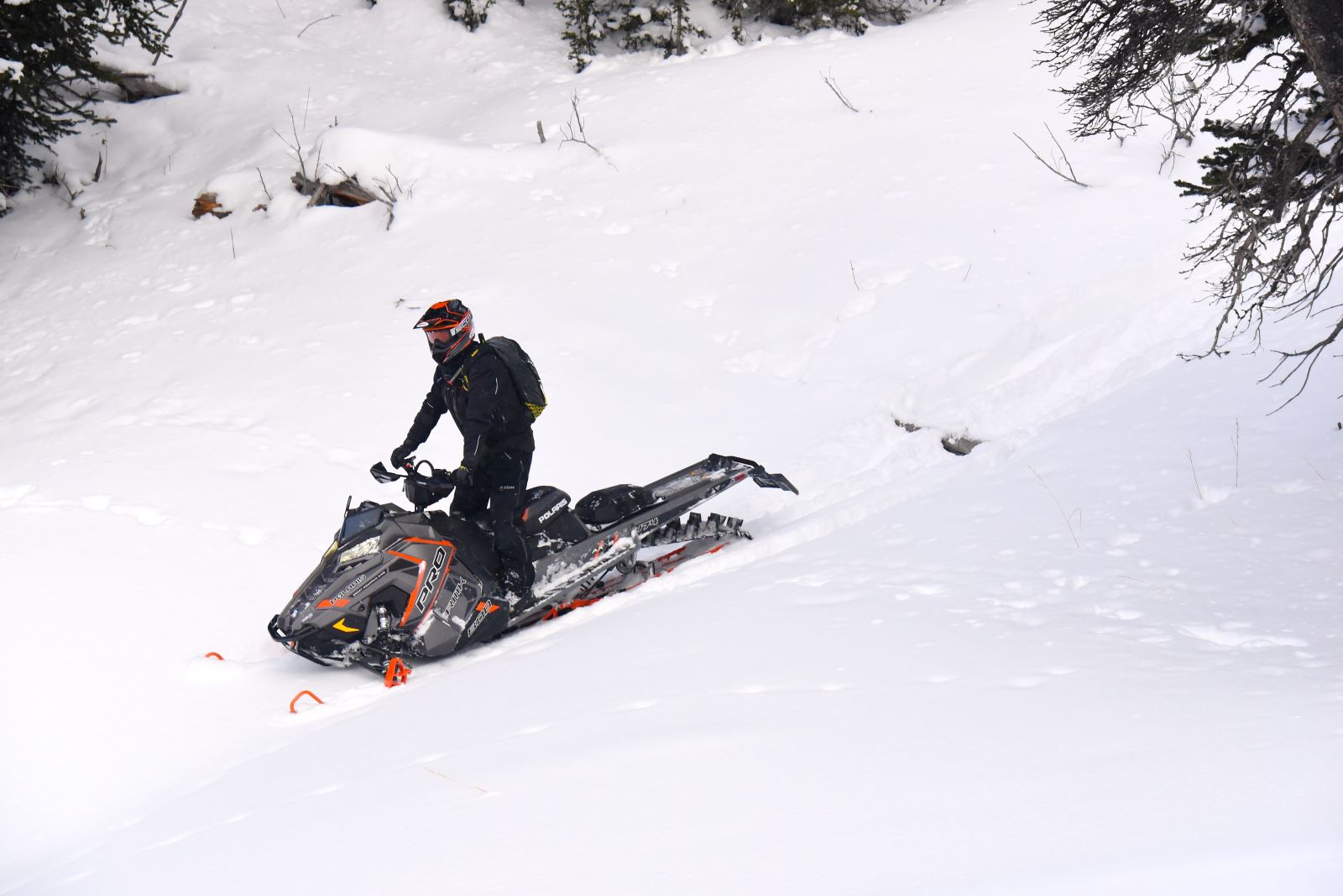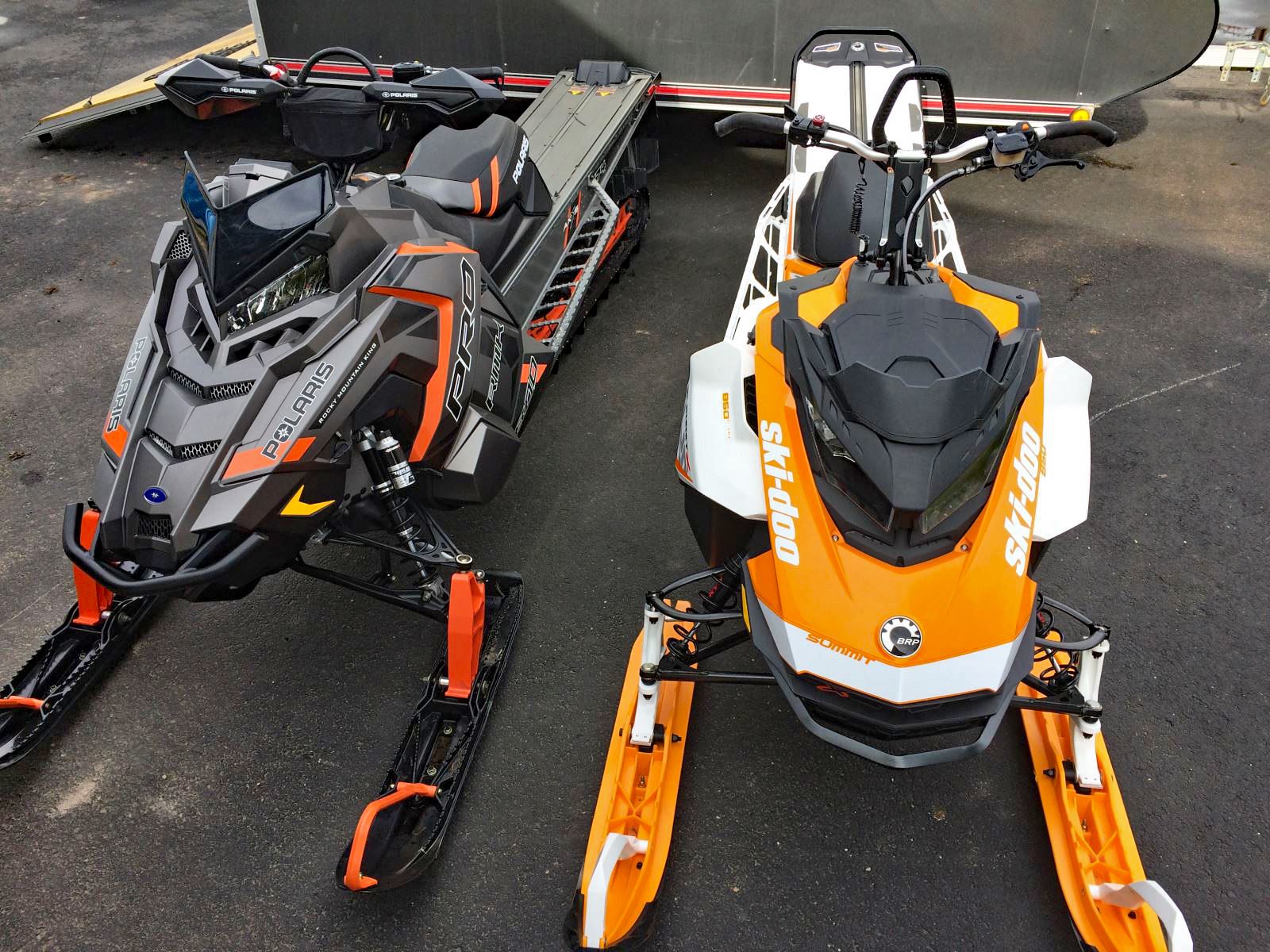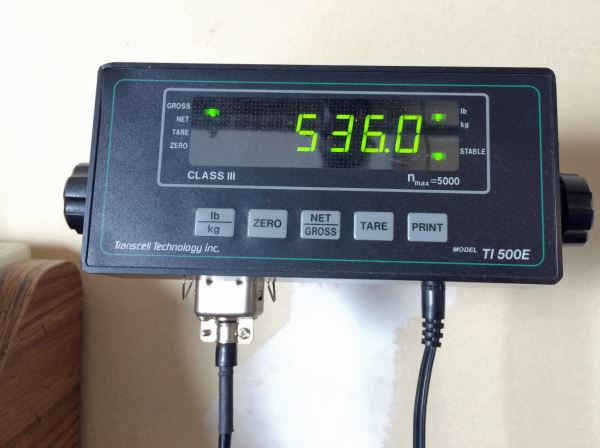http://www.snowest.com/2016/04/skidoo-summit-x-850-etec

The advantage of working for SnoWest Magazine is that we usually get to spend a little extra time on the new snowmobiles in the spring before they are officially released in the fall.
That was the case with the Ski-Doo Summit X 850 E-Tec and the Polaris 800 Pro-RMK 174 LE.
Although we have spent more time on the Summit 850, we have still been able to get both these 2017 snowmobiles on the snow at the same time and see what we like and dislike about them … and there are far more things that we like than we dislike.

First to note is that our Summit 850 had a 165x3-inch track and the Pro-RMK LE had the 174x3-inch track.
But when you factor in the 16-inch-wide track of the Ski-Doo compared to the 15-inch-wide track of the Polaris, both would have basically the same footprint in the snow.
Weight wise, the Summit tips the scales fully fueled (and full of oil) at 536 pounds and the Polaris weighs out fully fueled and oiled at 535 pounds … again, pretty much even.

On the snow, you definitely notice the increased power and engine performance on the Summit.
Both feel about the same on initial throttle engagement, however, the Summit seems to just keep creating power.
During our tests when climbing in steep terrain, the Polaris seems to do a much better job keeping its track in the snow while the Ski-Doo tends to pick up the skis a little more … and lift the front of the track.
This results in losing traction on the steep part of the mountain, thus losing some ability to climb to its full potential. The Polaris definitely outclimbed the Ski-Doo. We’ll have to work a little on the Ski-Doo’s weight transfer to get more track in the snow.
Yet, when you’re carving through trees or down the trail in spring-like conditions, you certainly feel much more track push on the Polaris.
The Ski-Doo is much easier turning in packed snow.
The 2017 Summit’s highlights include: Rotax 850 E-Tec engine, Rev platform, PDrive clutch, tMotion rear suspension and a Powdermax Light track with Flexedge.
The 2017 Pro-RMK LE features include: Cleanfire H.O. engine, raised AXYS RMK chassis, Walker Evans Piggyback shocks, ProTaper handlebars and a Series 7 3-inch track.
We’ll continue riding these two snowmobiles throughout the spring in order to provide a full review in next fall’s issues of SnoWest Magazine.

The advantage of working for SnoWest Magazine is that we usually get to spend a little extra time on the new snowmobiles in the spring before they are officially released in the fall.
That was the case with the Ski-Doo Summit X 850 E-Tec and the Polaris 800 Pro-RMK 174 LE.
Although we have spent more time on the Summit 850, we have still been able to get both these 2017 snowmobiles on the snow at the same time and see what we like and dislike about them … and there are far more things that we like than we dislike.

First to note is that our Summit 850 had a 165x3-inch track and the Pro-RMK LE had the 174x3-inch track.
But when you factor in the 16-inch-wide track of the Ski-Doo compared to the 15-inch-wide track of the Polaris, both would have basically the same footprint in the snow.
Weight wise, the Summit tips the scales fully fueled (and full of oil) at 536 pounds and the Polaris weighs out fully fueled and oiled at 535 pounds … again, pretty much even.

On the snow, you definitely notice the increased power and engine performance on the Summit.
Both feel about the same on initial throttle engagement, however, the Summit seems to just keep creating power.
During our tests when climbing in steep terrain, the Polaris seems to do a much better job keeping its track in the snow while the Ski-Doo tends to pick up the skis a little more … and lift the front of the track.
This results in losing traction on the steep part of the mountain, thus losing some ability to climb to its full potential. The Polaris definitely outclimbed the Ski-Doo. We’ll have to work a little on the Ski-Doo’s weight transfer to get more track in the snow.
Yet, when you’re carving through trees or down the trail in spring-like conditions, you certainly feel much more track push on the Polaris.
The Ski-Doo is much easier turning in packed snow.
The 2017 Summit’s highlights include: Rotax 850 E-Tec engine, Rev platform, PDrive clutch, tMotion rear suspension and a Powdermax Light track with Flexedge.
The 2017 Pro-RMK LE features include: Cleanfire H.O. engine, raised AXYS RMK chassis, Walker Evans Piggyback shocks, ProTaper handlebars and a Series 7 3-inch track.
We’ll continue riding these two snowmobiles throughout the spring in order to provide a full review in next fall’s issues of SnoWest Magazine.

